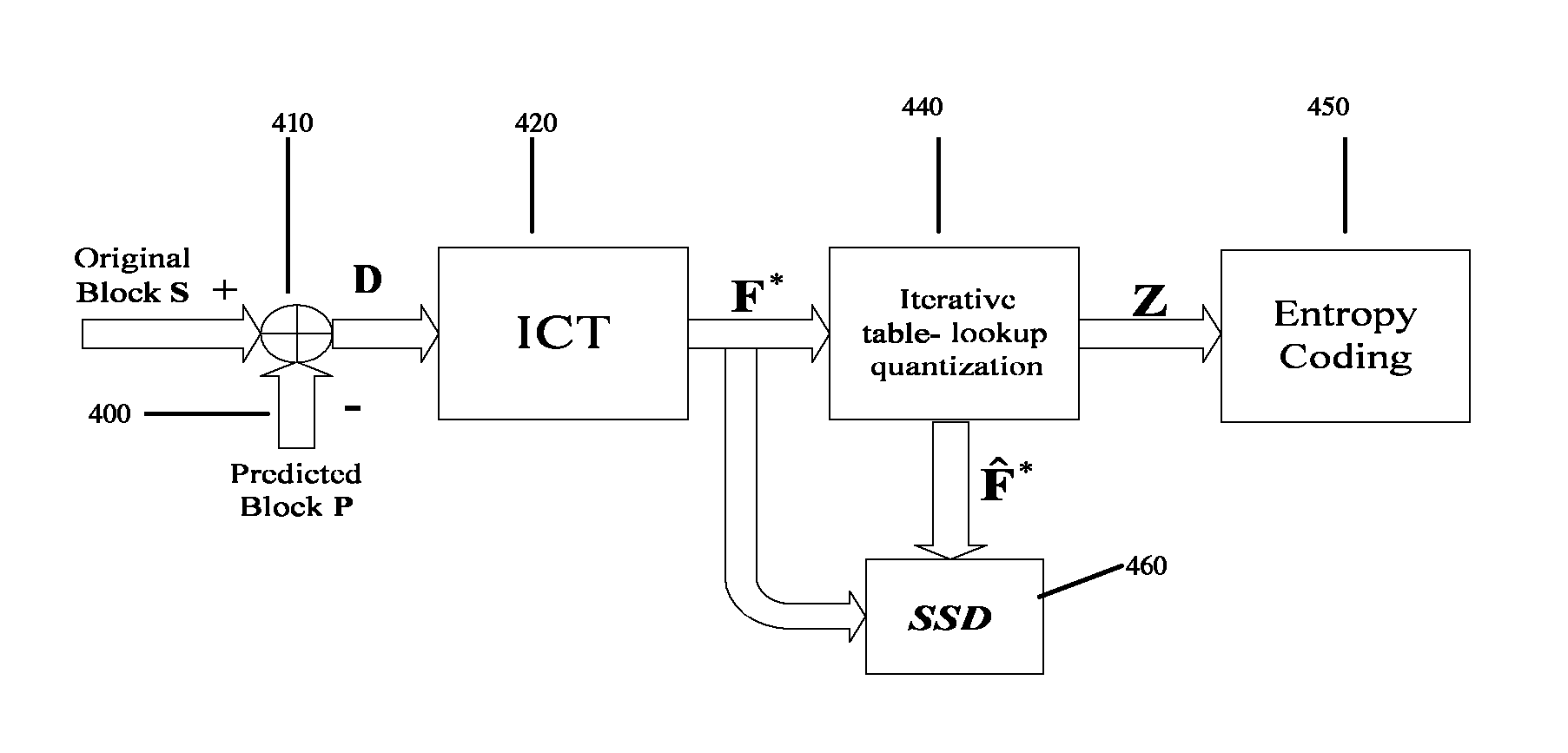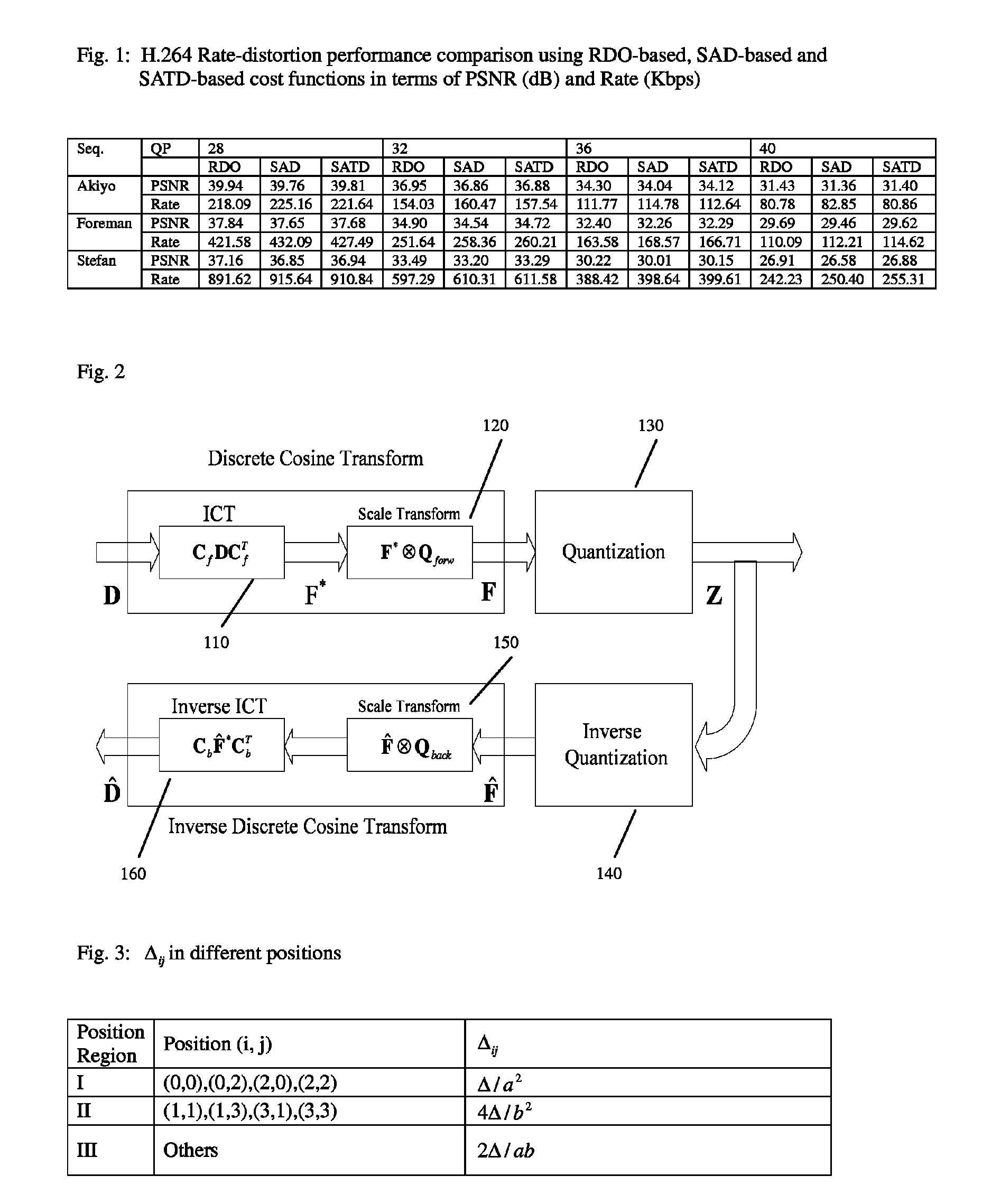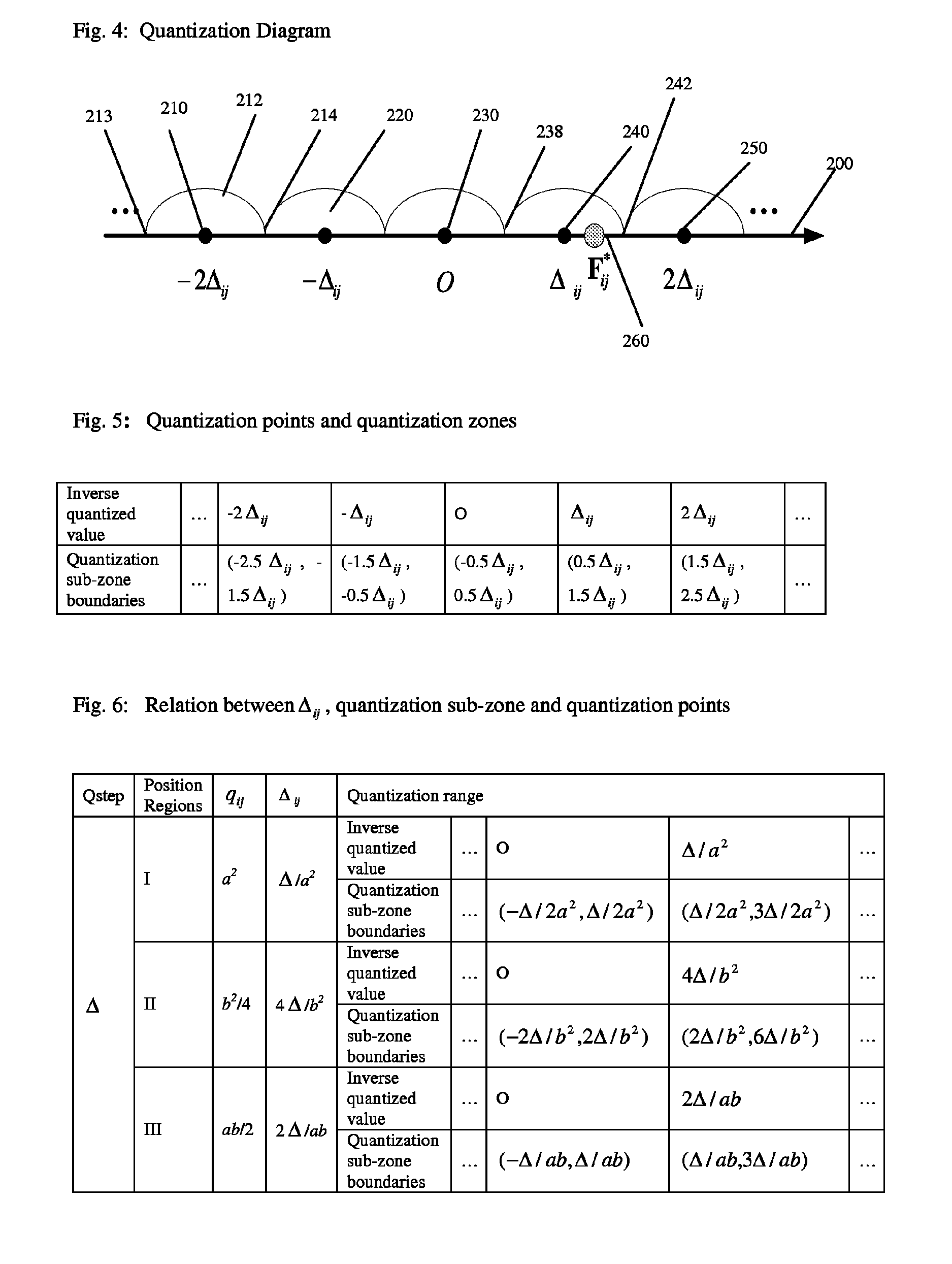Method and apparatus for calculating an SSD and encoding a video signal
a technology of encoding and video signal, applied in the field of calculating an ssd and encoding a video signal, can solve the problems of reducing computation, consuming a lot of time and processing power, and calculating a spatial-domain ssd, and achieve the effect of quick and efficient way of determining distortion
- Summary
- Abstract
- Description
- Claims
- Application Information
AI Technical Summary
Benefits of technology
Problems solved by technology
Method used
Image
Examples
Embodiment Construction
I. Introduction
[0111]The present invention relates to a method and apparatus for determining the distortion caused by encoding a block of video or image data. This may be conveniently calculated based on the squared sum or differences between a source block and a reconstructed block of image or video data. The rate-distortion of a particular inter or intra encoding mode may also be calculated on the basis of the distortion and the number of bits required to entropy encode a block which has been encoding according to the particular inter or intra encoding mode. Preferred embodiments of the present invention relate to a method of encoding image or video data, including selecting an encoding mode based on the rate-distortion of said mode.
[0112]The present invention may be utilized with any image or video encoding standard which uses inter or intra prediction. However, it may be particularly suitable for use with the new H.264 / AVC standard. Accordingly this standard now will be briefly ...
PUM
 Login to View More
Login to View More Abstract
Description
Claims
Application Information
 Login to View More
Login to View More - R&D
- Intellectual Property
- Life Sciences
- Materials
- Tech Scout
- Unparalleled Data Quality
- Higher Quality Content
- 60% Fewer Hallucinations
Browse by: Latest US Patents, China's latest patents, Technical Efficacy Thesaurus, Application Domain, Technology Topic, Popular Technical Reports.
© 2025 PatSnap. All rights reserved.Legal|Privacy policy|Modern Slavery Act Transparency Statement|Sitemap|About US| Contact US: help@patsnap.com



